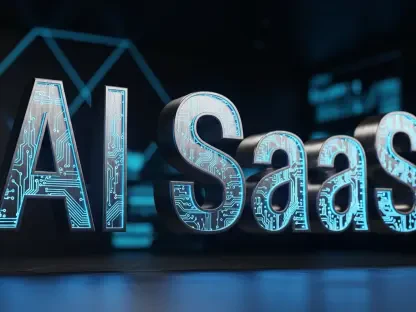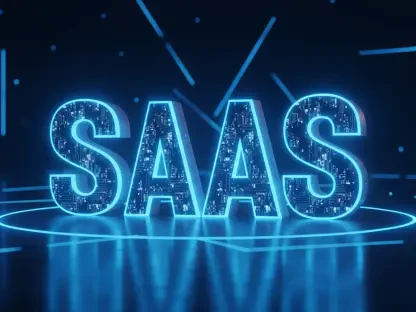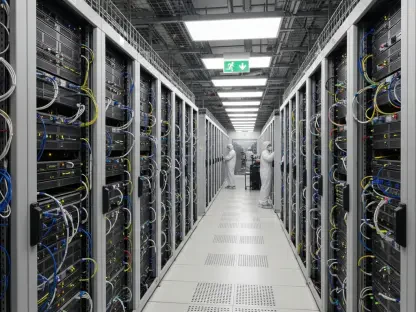Setting the Stage for AI Market Dynamics
In the rapidly shifting arena of artificial intelligence (AI), Microsoft stands as a colossus, yet faces a pivotal challenge in 2025 that could define its future in this transformative field. As generative AI (GenAI) reshapes industries, a staggering projection from industry analysis suggests that the global AI market could surpass $500 billion by the end of this decade. Central to this transformation is Microsoft’s historic alliance with OpenAI, a partnership now tested by OpenAI’s expanding collaborations with tech powerhouses like NVIDIA and Oracle. This market analysis examines whether Microsoft’s stronghold in the AI sector is under threat or poised for strategic reinvention. By delving into current trends, data-driven insights, and future projections, the focus is on Microsoft’s adaptability amid a competitive landscape, offering a lens into Azure’s growth and enterprise strategies.
Deep Dive into AI Market Trends and Microsoft’s Position
Historical Foundations and Emerging Shifts
Microsoft’s journey in AI took a defining turn with its multi-billion-dollar investment in OpenAI back in 2019, positioning the company as a frontrunner in GenAI innovation. This collaboration integrated advanced models like ChatGPT into Azure’s cloud infrastructure and productivity suites such as Microsoft 365, capturing significant enterprise market share. However, the landscape is evolving as OpenAI secures massive infrastructure deals elsewhere, including a $10 billion AI computing agreement with NVIDIA and a substantial $300 billion, five-year contract with Oracle. These developments signal a broader distribution of AI resources, prompting questions about Microsoft’s once-exclusive leverage in this space.
Strategic Resource Prioritization in a Crowded Field
A notable trend in Microsoft’s current strategy is its calculated reallocation of critical resources like GPUs and data centers away from certain OpenAI contracts toward high-value enterprise clients. Industry insights frame this not as a retreat but as a deliberate focus on customers yielding higher profit margins and lower concentration risk. This pivot reduces dependency on a single partner while optimizing returns on Microsoft’s substantial AI infrastructure investments. The challenge lies in maintaining innovation momentum, but the move diversifies revenue streams, shielding the company from potential disruptions in any one alliance.
Azure’s Growth as a Market Anchor
Beyond partnerships, Microsoft’s Azure cloud services emerge as a cornerstone of its market resilience. Azure’s expansion is fueled by widespread enterprise cloud migration and escalating capital expenditures on AI infrastructure, not solely reliant on OpenAI’s contributions. Analysts forecast Azure AI revenues to climb significantly, targeting $10.4 billion in the current year and projecting over $20 billion by 2029, even under conservative margin estimates. This growth trajectory underscores Azure’s role as a leader in platform-as-a-service (PaaS) and infrastructure-as-a-service (IaaS), positioning Microsoft to capitalize on the escalating demand for scalable AI solutions across industries.
Enterprise Ecosystem and Competitive Moat
Complementing Azure’s ascent is Microsoft’s robust enterprise productivity ecosystem, including tools like Microsoft 365 and Copilot, which foster deep customer loyalty. Data indicates Copilot adoption rates are on an upward trend, expected to rise from 31% to 43% within the next few quarters. This stickiness, combined with Microsoft’s historical adaptability—evidenced by its outpacing of competitors like Slack with Teams—creates a formidable barrier to entry for rivals. Nevertheless, emerging disruptions such as Agentic AI pose risks to traditional productivity models, though Microsoft’s track record suggests agility in navigating such challenges.
Evolving Alliances and Market Implications
The Microsoft-OpenAI relationship itself is under transformation, marked by a recent non-binding Memorandum of Understanding (MOU) that hints at sustained collaboration without rigid commitments. While details like revenue-sharing remain undisclosed, this agreement likely ensures Microsoft’s access to OpenAI’s intellectual property, adapting to diverse market needs across regions like the U.S. and Europe. This flexibility mitigates the risk of over-reliance while allowing Microsoft to pursue growth in other areas. The broader implication is a market shift toward multi-party collaborations, with OpenAI’s ties to NVIDIA and Oracle reflecting a distributed AI ecosystem that challenges the era of exclusivity.
Future Projections in AI Infrastructure Competition
Looking ahead, the AI infrastructure market is witnessing fierce competition, with players like Google Cloud, SoftBank, and CoreWeave vying for dominance in computing power and workloads. This trend points to a fragmented landscape where strategic partnerships and diversified offerings will define success. Microsoft appears well-equipped to adapt, leveraging its enterprise focus and Azure’s scalability. Potential headwinds, such as regulatory changes around data privacy or rising hardware costs, could shape the market, yet projections suggest Azure will maintain leadership by innovating in autonomous AI agents and cross-sector applications.
Reflecting on Strategic Pathways Forward
Looking back, Microsoft’s navigation of the AI market in 2025 demonstrated a blend of strategic foresight and adaptability amid OpenAI’s broadening partnerships. The company’s focus on enterprise clients, bolstered by Azure’s robust growth and a sticky productivity ecosystem, solidified its competitive stance. For businesses and investors, the takeaway was clear: confidence in Microsoft’s trajectory warranted attention, with analyst upgrades signaling a potential 23% stock upside. Moving forward, enterprises were encouraged to integrate Microsoft’s evolving AI tools into workflows for operational efficiency, while investors considered diversifying tech portfolios to mirror Microsoft’s multi-faceted approach. Staying attuned to Azure’s innovations and emerging AI trends became a critical step for maintaining a competitive edge in an ever-evolving landscape.









